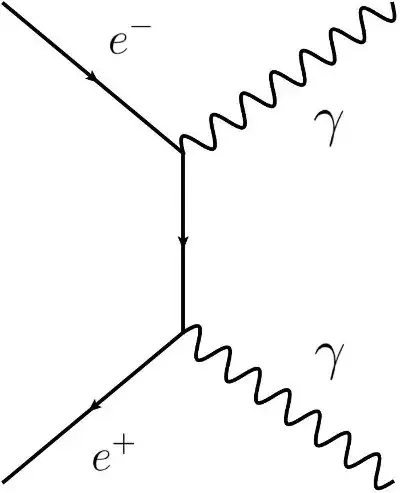Now, it is established that positrons and electrons have the same mass but opposite charges. Since they have opposite charges, do they create a force of attraction and collide thus annihilating each other? Or do they just "happen" to interact? If an attraction exists, can it also occur through a conductor?
5 Answers
They attract each other and form a system completely analogous to a hydrogen atom, called positronium. This will then annihilate into at least two photons. The half-life time depends on whether the spins are parallel (orthopositronium, 144 ns) or antiparallel (parapositronium, 0.12 ns).
This decay finds medical application in positron emission tomography (PET).
There is indeed an attractive force between a positron and electron, but this doesn't necessarily mean they will collide. For example there is an attractive force between the Earth and the Sun, but the Earth is not about to collide with the Sun. If we fire a positron and electron towards each other they will follow the same sorts of trajectories as we'd get from firing two masses towards each other. Depending on their energies they could fly past each other with some closest distance of approach (conventionally called $b$) or they could orbit each other as in the positronium atom described by my2cts.
The probability of the "reaction" between the positron and electron to form two photons depends on how close they get to each other and how long they stay close to each other. In positronium they are about a Bohr radius apart because the positronium atom is about the same size as a hydrogen atom, and as my2cts says at this distance they react in about $144$ns. But suppose we fired them towards each other so they passed each other at the same distance, but this time at nearly the speed of light. They would fly past each other so quickly that they wouldn't have time to react and no annihilation would occur (more precisely the probability of annihilation is greatly reduced).
So the fact they have opposite charges will determine how close the positron and electron get, and therefore how likely they are to react and annihilate to form two photons. However it does not mean the positron and electron will always react.
Finally, you ask what would happen if the positron and electron were in a conductor. Presumably you're thinking about a positron flowing through a copper wire and reacting with the conduction electrons. This obviously more complicated as the positron interacts with all the many particles around it. However to a reasonably good approximation the particles behave in a similar way to free particles and the probability of the reaction is similar to the probability for free particles. However there are of course many, many conduction electrons in copper so even if the reaction probability for a single interaction is low (e.g. if the positron has a high velocity) the large density of electrons means the positron will annihilate very quickly.
- 367,598
As per Coulomb law, $$ |\mathbf {F} |=k_{\text{e}}{\frac {|q_{1}q_{2}|}{r^{2}}} $$
any charged particle $q_1$ affects any other charged particle $q_2$ (unless distance between them is infinity).
So the answer is yes, positrons are attracted by electrons, and upon collision they annihilate, according to reaction: $$ e^{^+} + e^{^-} \to \gamma + \gamma $$ or in terms of Feynman diagram :
There are pair of photons produced, due to momentum conservation. If for example positron and electron are colliding front-to-front with approximately same momentum magnitude, then it must be satisfied : $$ \vec {p^{^+}} + \vec {p^{^-}} = 0 $$
But if just one photon would came out, it would carry non-zero momentum, in contrary to what equation requires, so in that case pair of photons are produced going in opposite directions :
(There are cases when just single photon can be produced, but that involves third charged particle to which photon transfers excess momentum, so Feynman diagram would be a bit different.)
- 16,916
Yes, they absolutely do attract each other and annihilate upon collision. It's worth noting that they don't normally just float in space and drift slowly towards each other, positrons are usually moving very quickly (because of how they are produced) and the attractive force of the electron won't make much of a difference in its path unless its path was already going very near the electron.
- 7,882
This is to answer your:
If an attraction exists, can it also occur through a conductor?
What are electrons and positrons? They are quantum mechanically defined elementary particles in the standard model of mainstream particle physics. Their interactions modeled with quantum mechanical solutions as shown in the answers.
What are conductors?
They are ensembles of atoms , also quantum mechanically defined, ~ $10^{23}$ atoms per mole. Atoms are composed of a nucleus and a number of electrons in a bound state around the nucleus,the atom has charge zero. Conductivity in solids happens when the solutions allow electrons to move in the lattice of metals. A positron would have a very high probability to immediately interact with an electron and disappear as the other answers state. There is no probability for the attractive field of a positron to an electron to exist through a conductor.
- 236,935

